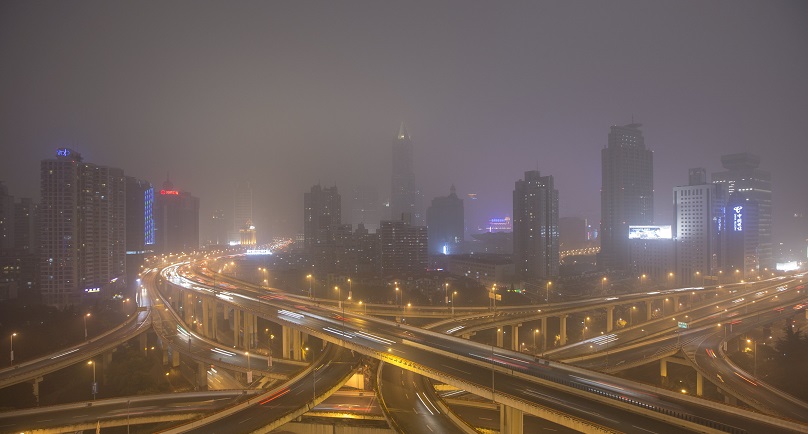Image: Downtown Shanghai on a hazy night in this January 25, 2015 file photo. REUTERS/Aly Song/Files
By David Stanway
BEIJING (Reuters) – China and the United States have outlined an eye-catching “common vision” to secure an ambitious global climate deal later this year, but experts say a centerpiece pledge by Beijing to establish a nationwide carbon market is no game-changer.
In a joint statement made during President Xi Jinping’s visit to the United States, China confirmed it would launch national cap-and-trade scheme in 2017, forcing big emitters to buy credits to meet CO2 reduction targets.
The world’s top two greenhouse gas emitting nations also agreed to stand together during the crucial round of talks on a new global deal beginning in Paris in late November, agreeing that emissions targets should “ramp up over time in the direction of greater ambition”.
There were no specific new measures from either side, however, to build on pledges made last November, when China said it would bring its spiraling emissions to a peak by “around 2030” while the United States promised to cut its own CO2 by 26-28 percent by 2025 compared to the 2005 level.
“I wouldn’t underestimate the importance of this kind of working together,” said Bret Harper, Associate Director of Research at Australian clean energy consultant RepuTex.
“But in terms of pure substance, there weren’t really any new announcements beyond some kind of fuzzy things regarding what China wants to do in the power sector and potential linking of carbon markets in the distant future.”
GLOBAL TALKS
The Nov. 30-Dec 11 Conference of the Parties (COP) in Paris will be the latest attempt by world leaders to forge a deal intended to avert more heatwaves, floods and rising seas following the failure of talks in Copenhagen in 2009.
China and the United States have been the main forces preventing a global climate deal in the past decade or two. With the world’s two biggest economies now in agreement, a global deal in Paris has become much more likely, albeit with less ambitious targets than many, including the European Union, want.
As a developing country committed to the notion that industrialized nations such as the United States should bear most of the burden when it comes to combating global warming, China has been careful not to promise too much.
Emissions trading has already become an established part of its domestic policy agenda.
“The United States and China will actually stand together in the COP talks, and that has to be better than not standing together on whatever is agreed,” said Philip Andrews-Speed, head of energy security research at National University of Singapore.
“But I don’t think this has changed the world. It is another incremental slight twist of the dial. They chose a goal they are able to meet, not least because the economy is disappearing down the drain.”
CAP-AND-TRADE
Beijing has already launched seven pilot carbon trading exchanges starting in 2013 and covering a range of heavy industrial sectors.
It originally planned to begin nationwide trading in the second half of next year, when the pilot phase expires, but planning officials stated earlier this year that 2017 was more likely.
Experts said the prominence given to the 2017 target during President Xi’s U.S. visit should at least concentrate the minds of policymakers, who have been struggling to figure out the best way to integrate the seven independently operating markets.
“Such news (of a 2017 launch) has been around for a year already,” said Richard Mao with the Environomist carbon consultancy in Beijing. “I still think it is a big deal because it came from the leader this time, plus it raises more expectations for Paris.”
But it is still unclear how ambitious the nationwide scheme will be.
It is expected to focus on large and heavy industrial enterprises in sectors such as power generation, iron and steel, and chemicals, though officials are debating whether to widen its scope.
Beijing has so far been reluctant to increase the financial burden on industrial firms, with nearly all carbon permits in the existing schemes allocated free of charge, meaning that actual carbon trade has been limited.
Market designers estimate that a nationwide scheme would regulate 3-4 billion tonnes of carbon dioxide a year by 2020, which would still amount to less than half of China’s estimated total annual emissions.
Experts say it is unlikely to provide a “silver bullet” unless it is backed up by other reforms.
“What the markets will look like is entirely still open to question and that means the effectiveness of the market is also going to be open to question,” said RepuTex’s Harper.
(Reporting by David Stanway in BEIJING, Jacob Gronholt-Pedersen in SINGAPORE and Matt Siegel in SYDNEY; Editing by Alex Richardson)
Copyright 2015 Thomson Reuters. Click for Restrictions.


